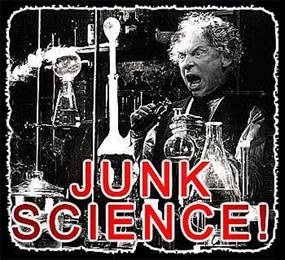Beware of Junk Science
The Myers-Briggs Type Indicator is the most popular personality test in the world. Fortune 100 love it. Government agencies love it. More than 1.5 million people take it every year.
Our only issue with it as social scientists is this: It’s garbage. Otherwise, the behavioral scientists at DonorVoice love it.
It fails two fundamental requirements.
- Not Valid – the measures don’t predict outcomes.
- Not reliable – the same person can take the test two separate times and get very different answers.
As the kids would say, this is big, freaking problem. (I have no idea if kids say this but if they did it would come in the form of incomprehensible shorthand on my kids’ tok-tik, instachat, snapgram accounts)
This got the DV team thinking about all the other popular, equally junky, junk-science out there.
Here’s our Junk list, critique and ball of thread with proof.
#1. Myers -Briggs. Not valid, not reliable, otherwise perfect.
#2. Net Promoter Score. NPS is a single, “willingness to recommend” question that must have the same kick-ass PR agent as Myers-Briggs because it’s super popular despite also being garbage. Ball of thread.
#3. Generational Marketing. This is our tilting-at-windmills passion. The more data and evidence we surface that this is akin to your horoscope, the more the true believers, believe. Ball of thread.
#4. Personas. Not a single person in Persona Group A matches the profile. Not a single person. Most people vary wildly from the theoretical average, especially when the Personas come from the Cluster F*$& of cluster analysis. Ball of thread.
#5. Satisfaction as the measurement. Having satisfied donors is better than dissatisfied. But, the concept shouldn’t be seen as the measure. Overall satisfaction with a specific interaction is too crude a measure. Ball of thread.
Speaking of thread, here is the red thread that cuts through all these pseudo-science concepts.
Common critique for all these:
- No theoretical basis. There are also junk theories behind junk science, so claiming some theoretical basis is not a cure-all. But, the absence of it is a death-knell.
- Lack reliability and validity. Everyone remembers these terms from stat 101. They matter.
- The grouping of people is arbitrary. All the Myers-Briggs types are arbitrary as are the Promoter/Detractor groupings for NPS.
- There is often more difference within than between the arbitrary groups
Fortunately, better science exists.
The future is here, it just isn’t widely “lived” in. Here are the existing, validated, already-in-use-by-charities replacements. (The numbering matches Junk Science above)
#1. Personality Big Five. Personality is largely genetic and very predictive of what a person will pay attention to and find interesting –and most importantly, the choices one makes. Ball of thread.
#2. Commitment. This is an attitudinal loyalty measure based on Relationship Theory and it’s easily the best loyalty predictor on the market because it also provides cause and effect answers. Ball of thread.
#3. Demographics are useful as proxy data and for targeting, which is all about efficiency. Demographics are almost always garbage for understanding “why” of behavior. We use demographic data as a proxy to score lists with Personality segment data. Ball of thread.
#4. Identity. Each of our donors multifaceted, personal narratives. Much of charitable giving is tied to reinforcing one’s sense of self – e.g. conservationist, Globalist, disease caregiver, Dog lover. Ball of thread.
#5. Need Satisfaction. There are three, psychological needs humans subconsciously want met when interacting with a charity: autonomy, competence and relatedness. Your copy, scripts and design should be audited through this lens.
You also want to measure supporter experience after each interaction. Make it part of your business process– giving it equal weight to collecting payment details.
But, don’t just measure. Act on the data in the moment and in aggregate to fix broken experiences. Ball of thread.
What else would you add? What do you disagree with?
Kevin



Brilliant. Best summary of crystal waving techniques that plague our sector.
Please circulate to all charity board members, conference organisers, CEOs and especially to those lovely people moving from the commercial world to the NFP world to save our sorry arses.
Thank you Sean for the feedback and comment.
I have been saying this about Myers-Briggs for literally decades. But it still keeps popping up like a whack-a-mole game. I was initially creeped out by it in grad school oh so many years ago, when a professor who was deeply invested in the cult of MB said, “We so people’s MB score before we even know their names.”
As you know then, Meyers and Briggs, her daughter, had zero expertise in psychology or psychometrics or statistical analysis, they were amateur writers. But I guess cult leaders needn’t be subject matter experts.
Thanks, Sean – I am very tired of corporate America coming in to help us poor nonprofit leaders. I bet I could run circles around most of the for-profit workers today. I am a hard worker and work smart; I can set clear expectations on how things must be done and when (since I am never finished with my job and always have to try new things). I am multi-talented and do about 3 different jobs every day. Plus, I have a good attitude about working hard and not getting paid what I am worth. Frankly – it’s why I work in the nonprofit sector and don’t want to work for corporate America. I think the bureaucracy would kill me!
That is an excellent summation, Kevin. What’s your verdict on DISC? I call it the party animal of assessments. I would appreciate your response. Thank you.